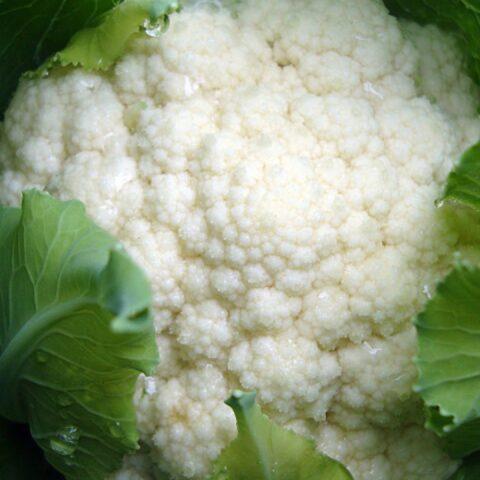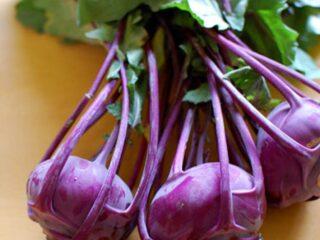Content
To get a good harvest, cauliflower varieties for the Moscow region and the middle zone are selected according to the time they reach biological ripeness. They must be suitable for the regional climate. Early cabbage ripens in 110 days, average cabbage in 135 days, late cabbage takes up to five months. Cauliflower has three times the vitamin content of white cabbage.
How to choose a cabbage variety for the Moscow region
Before planting, it is recommended to familiarize yourself with the varietal characteristics. If the goal is to grow a crop in a greenhouse, ultra-early cultivation is suitable; in open ground, they are guided by the weather conditions of the area.

Cauliflower begins to form a head after growing a powerful leaf rosette.
The vegetative part develops well at a temperature of 15-18 0C, for the Moscow region - this is approximately the end of June. It is better to buy mid-early or mid-late varieties.
Cauliflower is a cold-resistant plant; the growing season does not stop until -20 C, if the temperature is lower, it may die.If the plant is covered with film and there is a threat of return frosts, early varieties can be planted in the Moscow region.
Late-ripening cauliflower begins to grow green mass in July, but at a temperature of +250 Without optimal moisture, the leaf apparatus develops poorly and there will be no harvest. Therefore, growing late varieties in the Moscow region is problematic.
Based on these temperature indicators, a suitable variety for the middle zone is selected.
The best varieties of cauliflower for the Moscow region
To get a good harvest, you need to choose the optimal variety for the region. Below are several varieties and hybrids tested in the climatic conditions of the Moscow region and the middle zone with different ripening periods.
Snowball
Snowball is a stress-resistant plant that is not afraid of lower temperatures at the beginning of the growing season. It has strong immunity to common infections. The most popular variety of cauliflower in the Moscow region. Forms a powerful leaf rosette. The plates are long with carved edges, light green with a bluish tint. At the beginning of growth they are located horizontally, at the time of formation the forks are at an angle of 450, this feature makes the plant compact. When planting between holes, an interval of 25-30 cm is sufficient. The head is dense, white, rounded-flattened, weighing 700-900 g.

Mid-season variety Snow Globe ripens in 120 days from germination to harvest
Express
Express is a cold-resistant early variety. Ripens in 110 days. Suitable for growing in open ground and in greenhouse structures.Forms an erect leaf rosette of medium height with a closed middle. The plates are rounded and elongated, light green in color with carved edges. The forks are compact, dense, light cream, maximum weight – 400 g. A variety with a long shelf life. The heads are easy to transport. Cauliflower is versatile in use. The fruits and leaves are used in cooking.

Express is a productive variety; in the Moscow region you can take up to 3 kg from 1m2
Flora Blanca
Flora Blanca is a Dutch-bred cauliflower that is resistant to autumn frosts. The culture is medium late, ripens in 120 days. The variety is large-fruited, the head weighs on average 1.2 kg. The plant is tall, with a raised, powerful rosette. The leaves are long, narrow, light green. The fork is covered, round, lumpy, dense, light cream in color. A hybrid with a high gastronomic rating. There is no bitterness in the taste. Suitable for industrial cultivation.

The bush is spreading, there are only two plants per 1 m2
Productivity in the Moscow region is 2.5 kg.
Alpha
The Alpha variety has been on the State Register list for more than 10 years. It is popular among vegetable growers in the middle zone for its stable yield and taste. The plant is medium-sized - up to 50 cm in height. The rosette is spreading, the leaves are elliptical, long, blue-green with a waxy coating. The forks are not covered, large - up to 1.5 kg in weight, round, white, dense, juicy. Productivity from 1 m2 – about 3.5 kg.

The early-ripening variety Alpha matures in 90 days; in the conditions of the Moscow region in the spring it requires shelter at night
Guarantee
A hybrid variety of the crop, bred for industrial cultivation, the main direction of processing is the production of baby food.Cauliflower has proven itself well in private plots of the Moscow region. The culture is cold-resistant, medium-early, ripens in 110 days in open ground, in 70-80 days in a greenhouse. The socket is compact and raised. The leaves cover the fruit; they are narrow, long, bright green, and have a delicate structure. The head is dense, white with a slight yellowish tint, rounded and flattened.

Fork diameter about 20 cm, weight 0.8-1.2 kg
Early Gribovskaya 1355
Early Gribovskaya 1355 (Rannyaya gribovskaya 1355) is one of the first in domestic selection. Approved for cultivation in 1946. The variety tolerates moisture deficiency well in hot periods. The rosette is narrow, the leaves are up to 60 cm long, 16 cm wide, dark green with a silvery waxy coating. The fork is flat-round with a fine-grained surface, light beige, dense, diameter – 22 cm, weight up to 1 kg. When temperatures drop sharply, growth slows down, which affects yields. In the Moscow region they are planted in open ground at the end of May or early June.

Early Gribovskaya cauliflower ripens in 100 days, the yield per 1 m2 rarely exceeds 2 kg
Movir
Movir is one of the popular varieties of the Central regions. Mid-early cauliflower ripens in 105 days in open ground, 80 days in a greenhouse. Suitable for industrial cultivation, mechanical harvesting is possible. The rosette is 70 cm in diameter, raised. Leaf plates in the shape of an ellipse. They are 40 cm long and 25 cm wide. The color is light green with a silver tint. The fork is large - up to 1.3 kg, round, the surface is coarse-grained, the color is milky white.

Hybrid Movir tolerates temperature changes calmly and rarely gets sick
This is an ideal variety of cauliflower for growing in the climatic zone of the Moscow region.
Skorospelka
Skorospelka is a new variety of domestic selection. It was bred specifically for temperate climates. Reacts calmly to lower temperatures at the beginning of the growing season. One of the earliest varieties for the Moscow region, ripens in 95 days. Forms a powerful spreading rosette formed by wide, long, rounded leaves, steel-colored with a blue tint. The fork is not covered, flattened, with pronounced tuberosity. Maximum weight – 500 g.

The variety is valued for its friendly and rapid ripening
Productivity due to spreading vegetative mass and small fork is average, from 1 m2 can be obtained within 1.5 kg.
Features of cultivation
In the Moscow region, a good harvest in open ground is obtained only with preliminary cultivation of seedlings. Seeds are planted in containers with a nutrient mixture in March. After two weeks, they are dived into separate containers. Caring for cauliflower seedlings is the same as for white cabbage. Sprouts need good lighting and constant watering.
You can sow in an open area under a film in a greenhouse. The laying of the material is carried out in May. At the four-leaf stage, they are planted in a permanent place. The site is allocated well-lit, with light fertile soil.
Also not suitable is a site where crops from the cabbage family (radishes, radishes) were previously grown. The best predecessors are onions, potatoes, and legumes.
How to plant correctly:
- In the Moscow region, seedlings are placed in the garden in June. A week before, the area is dug up and added 1 m2 1 tbsp. l. urea and superphosphate, 200 g of wood ash, 3 kg of organic matter.
- Fertilizers are planted to a depth of 20 cm.
- They dig holes, place a plant in them, cover them with soil, and water them.
- After two days they spud up.
Agricultural technology for colored crop varieties:
- Water daily until the plant forms 10-12 leaves. Then the regime is reduced, but the soil is not allowed to dry out.
- A prerequisite is maintaining soil aeration. The row spacing is loosened to a depth of 10 cm. The frequency of the procedure is 5-7 days.
- As the weed grows, it is removed by the roots.
- Two weeks after planting, the seedlings are fertilized with organic matter, complex fertilizer, and “Kornerost”. After 10 days, add liquid mullein and Agricola for cabbage crops.
When heads the size of a walnut are formed, they are shaded, the two top leaves are connected and fixed to each other, or one is broken off like a canopy. But this measure is not suitable for all varieties; for example, cauliflower hybrids form heads already covered with leaves.
The crop is harvested selectively as it ripens. If you are late in the process, the heads will fall apart. In the case of early and cold autumn, which is no exception for the Moscow region, unripe plants are covered with film at night or dug up with a clod of earth and transferred to a greenhouse.
Conclusion
Cauliflower varieties for the Moscow region must have time to ripen before the temperature drops and be cold-resistant. The variety of crop is chosen in accordance with the characteristics of the regional climate. Ultra-early ones in the open ground of the middle zone may die, and late ones will not have time to reach biological ripeness.
Reviews of cauliflower varieties for the Moscow region








